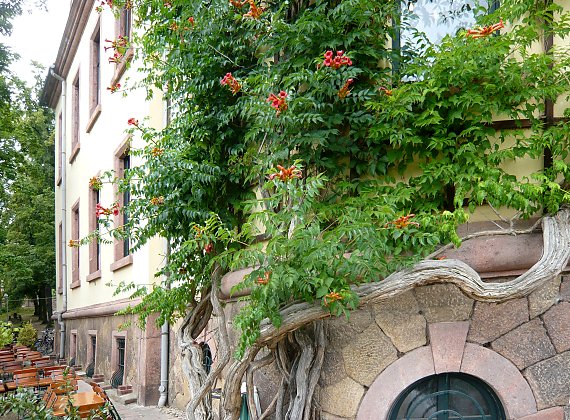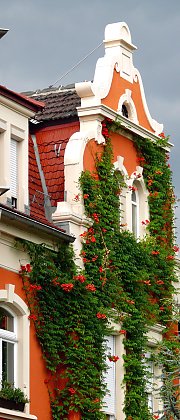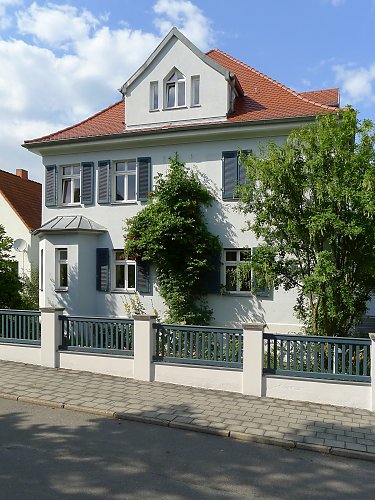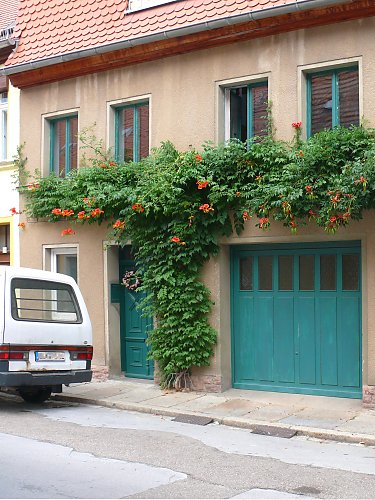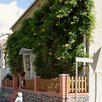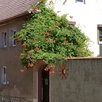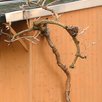General Info on Trumpet Vine
The vigour, health, and exotic flowers of the trumpet creeper make it a favourite in facade greening, offering beautiful coverage for downpipes or pergolas. For optimal growth, trumpet vines need plenty of space (a certain distance from a facade as well as space in front), stable climbing support, proper pruning, and regular maintenance. Trumpet flowers are loved by bees! >>> List of available varieties.
Trumpet creeper, trumpet vine, climbing trumpet, trumpet flower, trumpet jasmine. Latin: Campsis
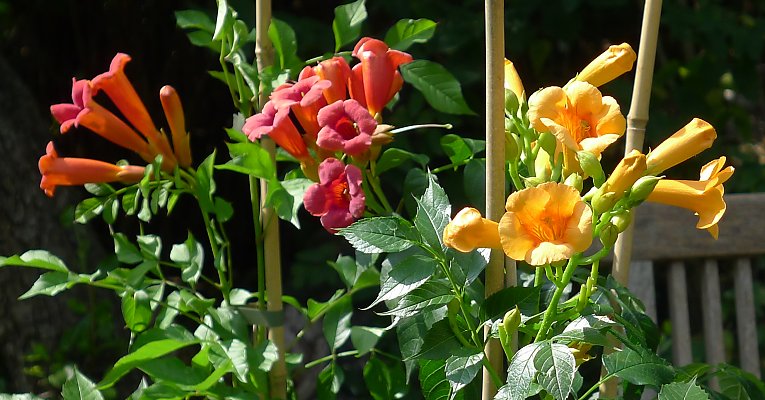
To Thrive...
Plant trumpet creeper in a warm, sunny, wind-protected location. The soil should be deep, humus-rich, with a good water supply. Shade at the base of the plant is beneficial. Distance between individual plants: 3 to 6 metres. Trumpet flowers need a lot of space in front when cultivated on a facade, because of their long overhanging shoots. Chose from our available varieties in the overview.
Characteristics and Pruning
A self-climber, usually cultivated on facades as a shapeable espalier, (only the Chinese grandiflora variety has almost no adhesive rootlets). A climbing aid is strongly recommended. On pergolas and the like you'll have overhanging / cascading shoots. We've included two botanical species (wild forms) in our assortment: Campsis radicans is originally from North America and was introduced to Europe in 1622 (frost resistant). Campsis grandiflora is originally from China. There are many cross breeds and varieties which differ in flower density, climbing behaviour, and winter hardiness.
All trumpet flowers have pinnate leaves that last from May to October with a beautiful yellow autumn colour. Most varieties show red, sometimes also orange and yellow flower umbels from July to September. The flowers are "rainproof" and fall off by themselves. Some inexpensive untreated plants will only bloom after several years. The fruits are pod-like capsules. No pruning in summer as the flowers appear at the extremities of the young shoots! "Winter" pruning is done in March, with all (side) shoots cut down to approx. 4 -10 cm long spurs, similar to way one prunes a grapevine.
Climbing Supports for the Facade
Trumpet flowers generally need a trellis for training and shaping the trunk. Most can climb a wall on their own with their adherent organs, but they can fall of the wall as the plant gets heavier, and really benefit from wire rope support which will sescure them to the wall and keep them up in strong winds. See the table at the bottom of the page for trellis shapes that are compatible with trumpet vine. Formation and trunk development are similar to grapevine pruning techniques. Choose a trellis in the medium or easy basic range, or even in the heavy / massive range.
Suitable cable systems for trumpet vine
Please click on the graphic illustrations for details!
| = suitable | = of limited suitability | = unsuitable |



